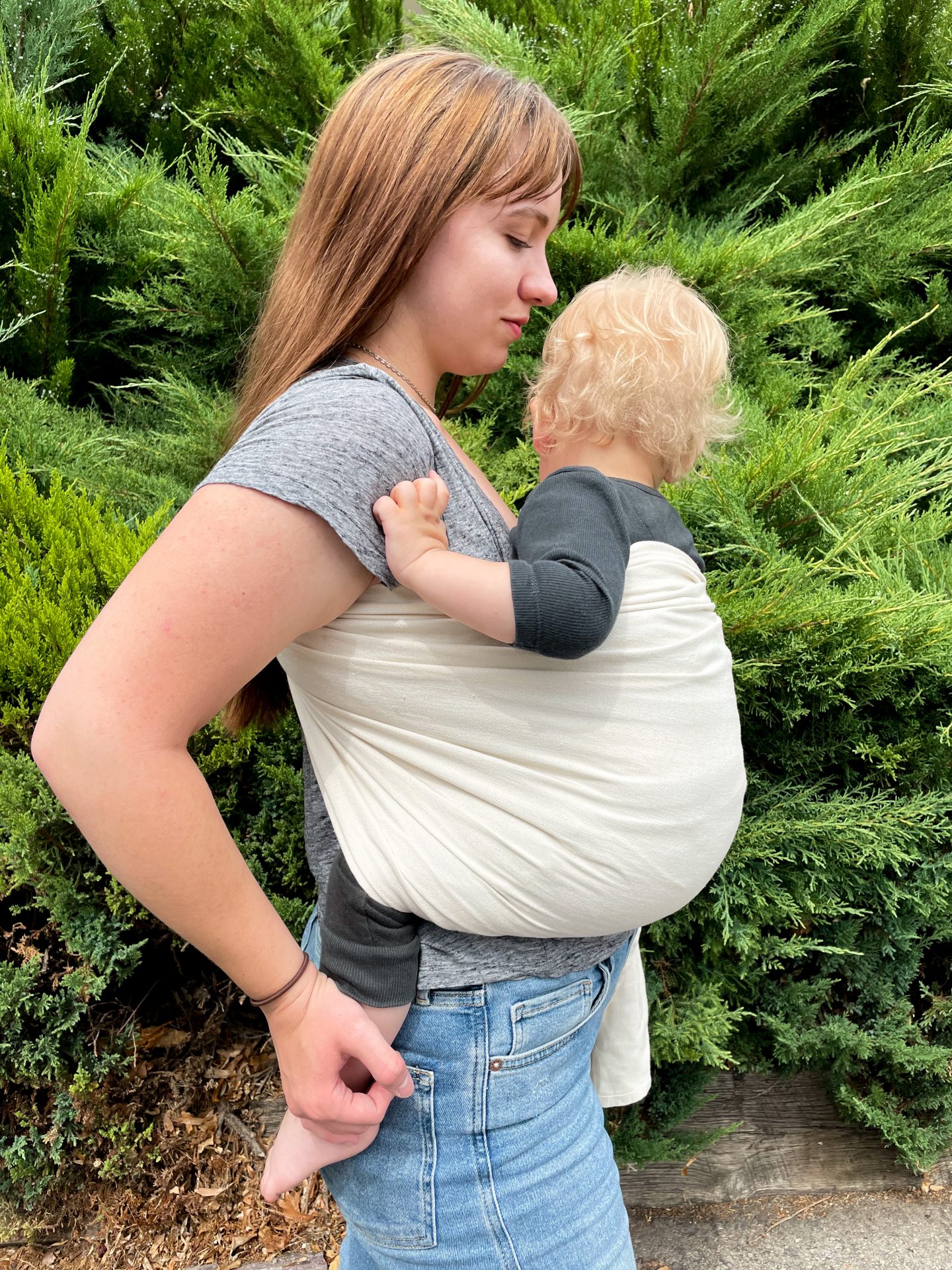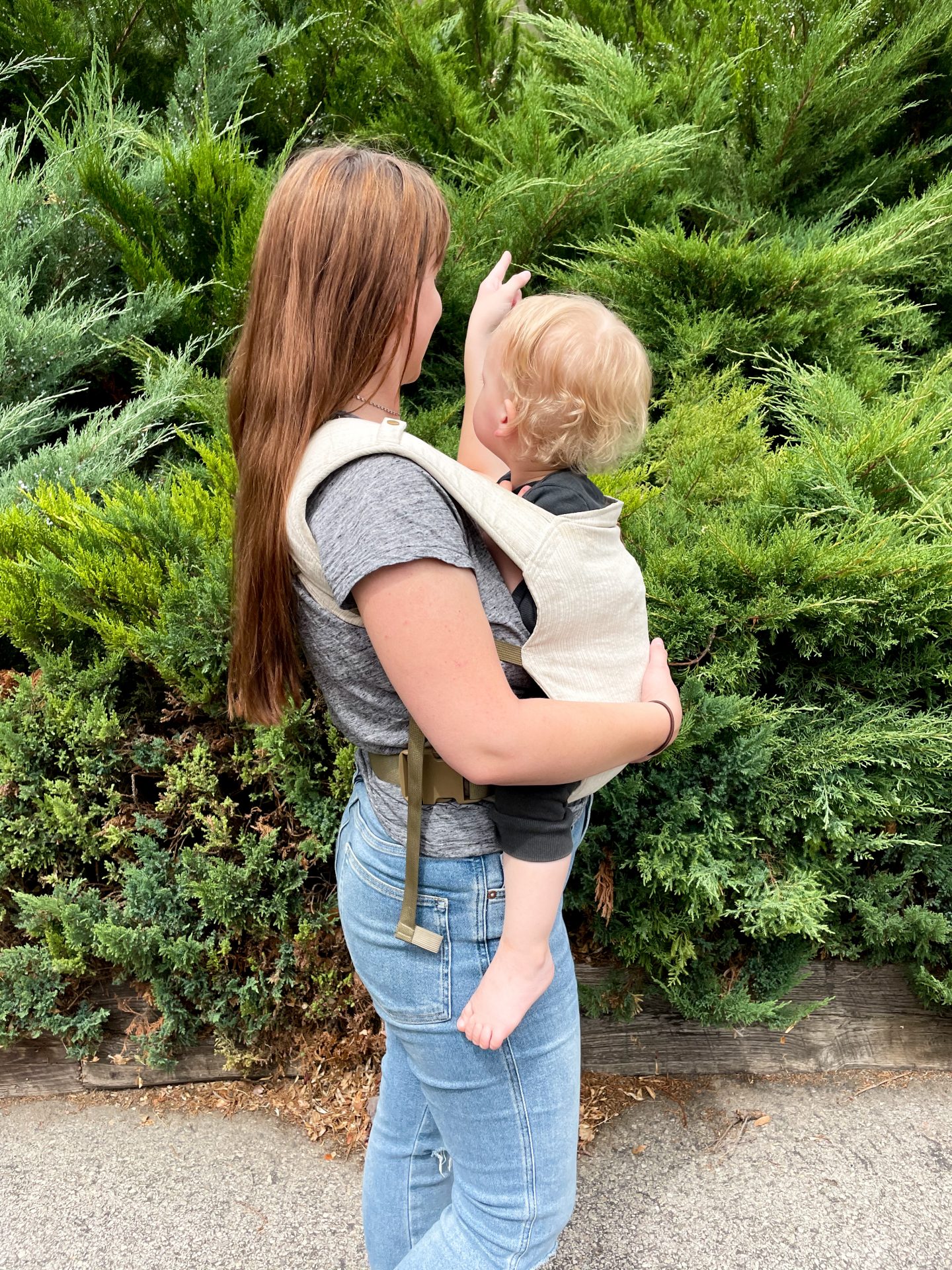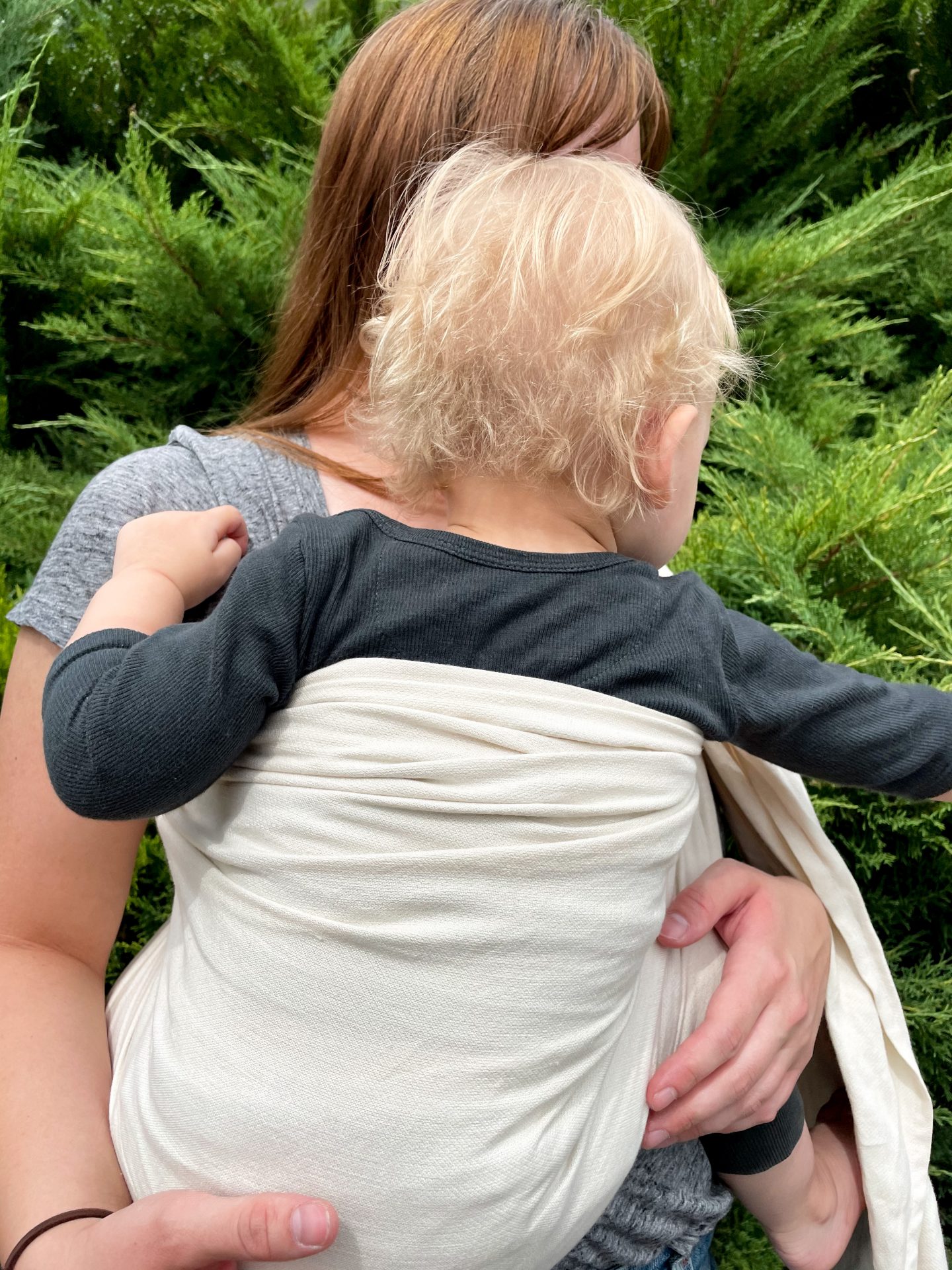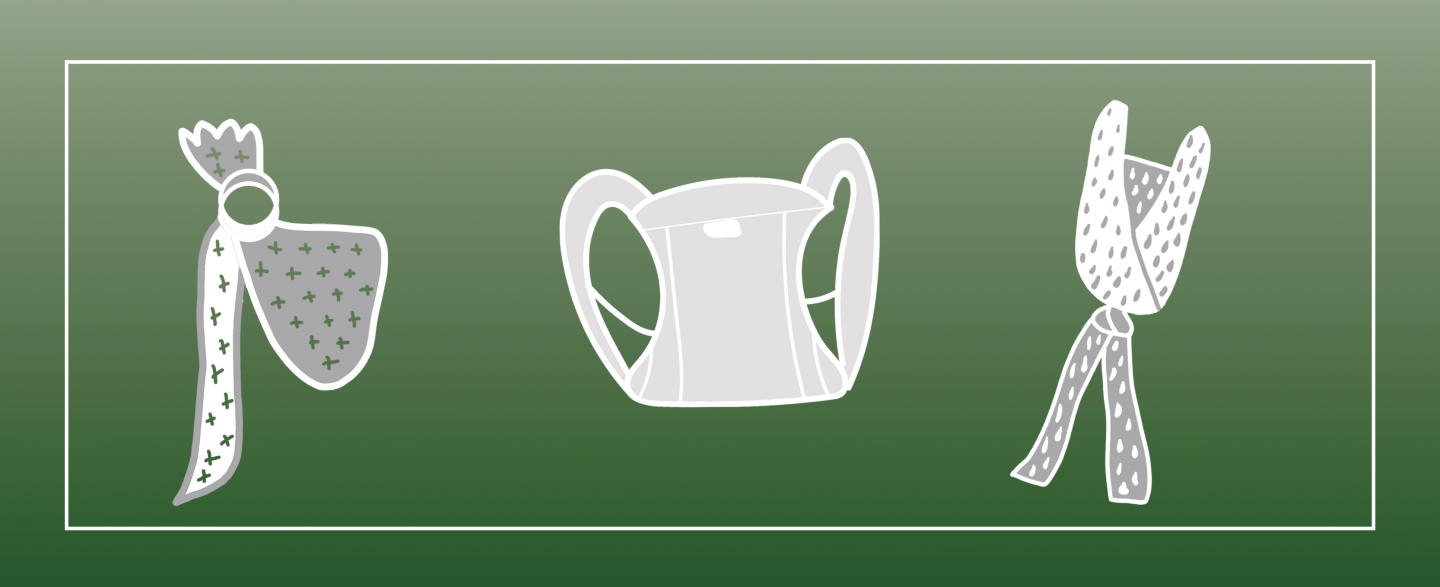
Babywearing is a fantastic way to care for and bond with your little one. Occasionally, articles pop up suggesting that babywearing is risky, however, studies overwhelmingly show that those fears are unfounded. In fact, wearing children provides them with a variety of benefits.
That being said, there are some important safety guidelines that must be followed, and when they are, they will ensure a secure, and enjoyable experience.
When checking to see if you’ve got a good fit in any type of carrier, you’re going to want to look at your baby’s positioning in a few areas to make sure that they’re supported correctly.
supporting the hips
One of the more common mistakes that new wearers fall into is not supporting the hips. With baby situated, we want to have their legs and bum creating an ‘m’ shape, with knees higher than bum. This will keep pressure in the right places, and avoid undue strain.
If your baby is predisposed to hip dysplasia, always check with their pediatrician before wearing (preferably one who supports babywearing). However, correct positing should not cause or exacerbate this.
It’s important to have their legs apart, like they would be if you were just carrying them on your hip. A too-narrow stance is not only harder to secure, but also does not support them as well as wider position. The exception to this is with a newborn, who can have their legs in, as long as they aren’t putting all their bodyweight on their ankles.
Baby doesn’t need to look like they’re attempting to wrap their legs around a giant redwood tree, but they should look comfortably situated. Likely, your child will naturally have decent positioning (or you can slowly work towards it), especially as they grow more accustomed to being worn.
If you’re nearly there, but not quite, try grasping their shins and pushing up just a bit, tilting them into the carry. This can settle the bottom edge of carrier (if it’s a ring sling or woven wrap) into the crook of their knees, where you want it; or it’ll ensure correct positioning in a SSC (or any carrier with a back panel).
In the end, their seat should be like they’re in a hammock, with legs over the edge, and their bum lower.
supporting the spine
Moving up the body, you’ll want to check that baby’s spine is supported. In the carrier, baby should look like they would if they were cuddled on your chest—with a slightly curved spine. Older children may sit up straight, and there certainly may be times when your dozy baby gets a bit slumpy in the carrier, but, for the most part, you are aiming for that slight curvature leaning in towards the wearer’s body.
The fabric across the little one’s back, regardless of carrier type, should be taught, supporting them fully. In a SSC, this will look like ensuring that nice deep seat for the hips, smoothing the back panel up their body, then tightening the carrier to secure it. In a ring sling or wrap, you will likely need to tighten stand by strand to get that snug fit. For stretchy wraps, I have found that really getting out all the slack before pre-tying is the best way to get a secure wrap job.
Make sure that there is no gapping between you and baby. You can test this by leaning forward a bit. If there’s a large space between you two now, retighten.
supporting the neck
Finally, at the top, we want to keep the child’s neck supported. This is especially important for little one’s who don’t have head and neck control yet.
Some SSC will have a back panel that extended at least to the base of the neck. In these carriers, you’re basically already sorted. Just pay attention, and ensure that the back panel isn’t extending all the way up their head, or over their head. It should be obvious to onlookers that there is a baby in the carrier. If not, you will probably need to retry the carry, after adjusting the carrier to be smaller. This will keep baby’s airflow open.
For other carriers, the top edge (rail) of the carrier should be at the neck. Older children can be arms out, and so the carrier may only go to their armpits. But once their arms are in, carriers usually extend to the neck, even for toddlers.
Having a top rail at the neckline won’t necessarily fully help a brand new baby person keep their head supported, so wrapping tail at the neck can create a pillow to provide extra support for tiny ones.
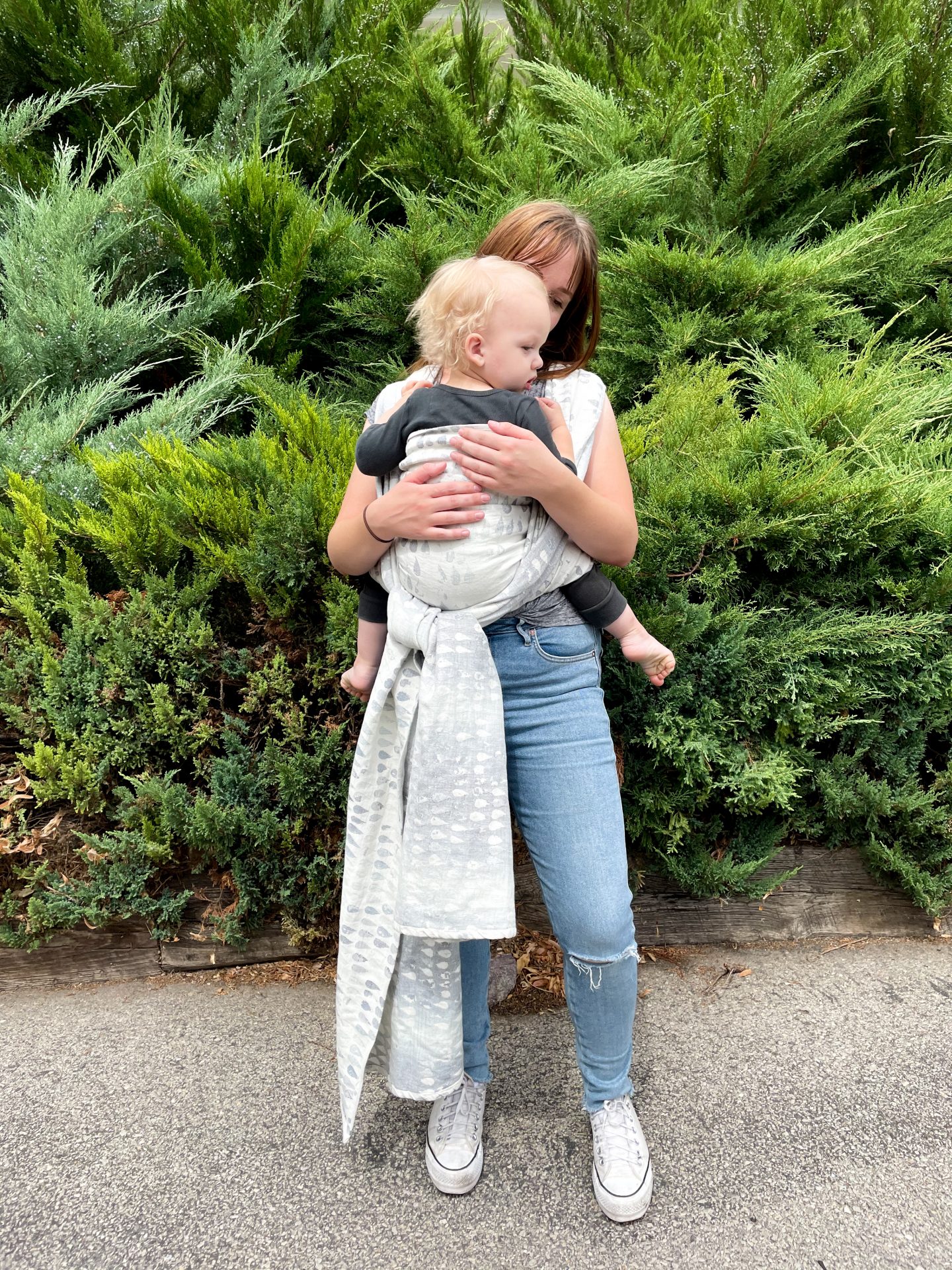
Now that we’ve gone over safety securing baby in the carrier, let’s talk about safety guidelines. An easy way to help you run through the list of recommendations is to remember TICKS.
T tight – As I mentioned above, reducing slack so that the carrier to holding baby’s weight, instead of only kind of doing its job, is important to keeping baby secure, and also making certain that the carry doesn’t loosen to an unsafe place over time.
I in view at all times – Keeping an eye on your little charge while wearing helps you be aware of their positing and breathing, so that you can make sure they are alright. Never grow lax, and allow a baby’s face to be out of sight from the wearer’s perspective.
C close enough to kiss – This is one of the easiest rules to recall, because it’s catchy. No matter what age the child you’re wearing is, they should be close enough to kiss (without you having to pull all your neck muscles to bend down). For tiny squishes, this means they will be worn higher on the body than, say, a 2 year old. They needn’t block your vision, but you kissing their head should be effortless.
K keep chin off chest – The reason allowing babies to sleep in carseats and the like is dangerous is because having their chin on their chest can block their airway, restricting or stopping their breathing. It’s the same for babywearing. Little babies can have such subtle breathing, it can be difficult for wearers to notice, let alone notice if there’s an issue. To avoiding this, make sure the child’s head is supported properly, and that their chin is off their chest so that they can get adequate airflow.
S supported back – We covered this above, but supporting baby’s back is key to holding appropriate posture, and to keeping them secure, even if they get fussy at some point. Always tighten your carrier so that they are strapped in there nice and cozy.
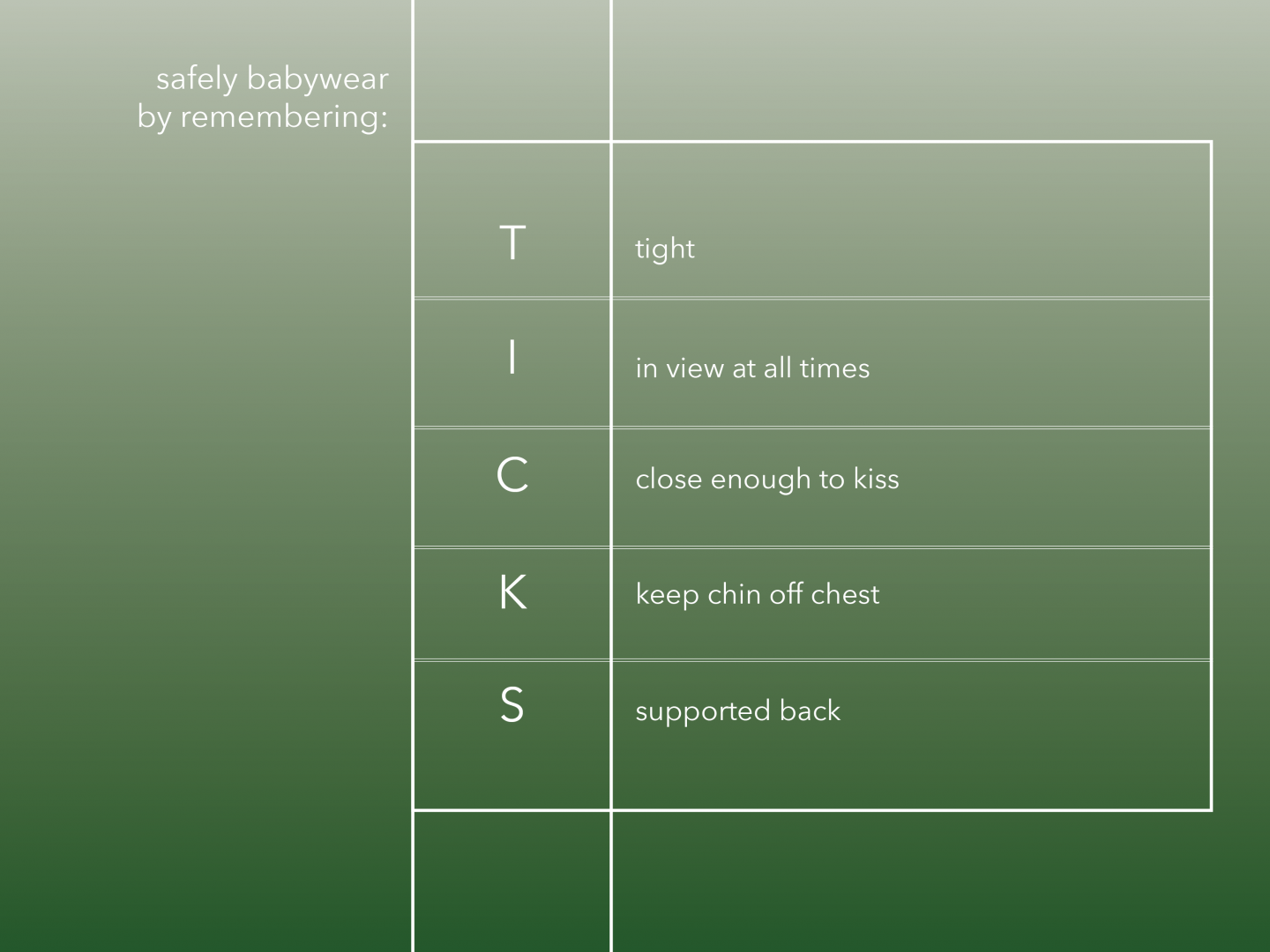
So there you have it, a complete rundown of babywearing safety. I hope this helps you troubleshoot your carrier, and feel confident in safely babywearing. For a dedicated newborn babywearing post, click here.
If you feel a need for more hands-on help, I highly, highly suggest contacting your local babywearing chapter. If you’re in Utah, you can head over to www.babywearingutah.org where I am one of the educators, to get one-on-one assistance.





